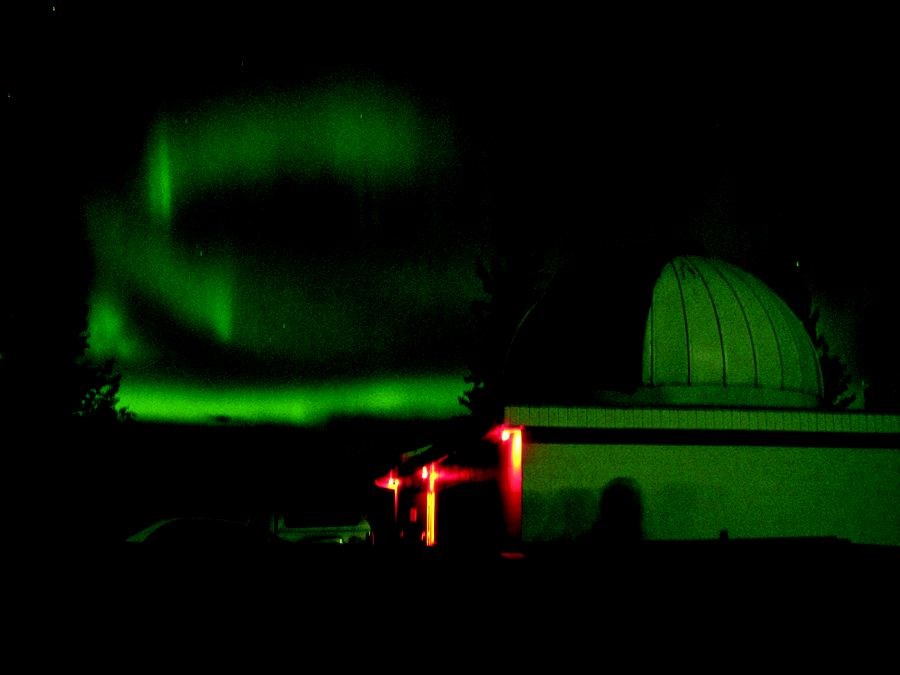Parents usually tell their children to not hang out in the woods at night, but it's encouraged among the stargazers that make up the Royal Astronomical Society of Canada Prince George Centre.
On Friday night, it was the place to be to witness the dazzling Northern Lights.
The society is a nonprofit organization dedicated to the advancement of astronomy and science in Prince George and the neighbouring Northern Canadian communities.
"What we offer is basically outreach where people can look through the telescopes and learn about the night's sky," said Maurice Sluka, club member.
Every Friday night from September to late November is when the club members invite the public to come and take a look at the night sky, see some constellations and even a planet or two.
"The attendance is pretty steady. If there is something big going on, like when we had the comet Hale-Bopp a few years back and we had cars parked all the way up the road. We had 300 to 400 people come in an evening," said Sluka.
The club was founded in 1979. The observatory was initially built on Tabor Mountain and has since been moved to its present location near West Lake.
Inside the observatory is a large telescope called a 0.61 Cassegrain, weighing in at nearly 1,000 lbs.
The lenses and mirrors for the telescope were purchased and the body was constructed in the College of New Caledonia's millwright shop.
Originally, the dome was the roof of a old farm silo, a slot was cut into it and a sliding door was fashioned to allow the telescope to see the starry nights.
The club operated at Tabor Mountain for four years, giving school groups tours and lessons on the galaxy.
In 1988, the observatory was closed due to vandalism and poor access in the winter.
"I don't think that people have to necessarily be interested in astronomy, but I do think they should be aware of what's out there. Sometimes it can be overwhelming to people. But people can just concentrate on the moon or a certain constellation and just learn about that because it's incredibly rewarding," said Sluka.
Most of the members have grown up interested in the science of the planets and stars.
"I first began to pay attention to the sky and use it when I was enlisted on a U.S. submarine and was responsible for night watches," said Jim VanDoren, a club member.
The club is in charge of collecting data from several meteor detection systems across the province from cameras that are pointing directly above. There is a camera at the observatory and two at members' houses - one in Tatla Lake and one in Mile 108.
"The cameras are set up to record the meteor activity in this part of the sky," said Harris.
Sluka has always been interested in astronomy but admits growing up in Vanderhoof allowed him to see the night sky with less light pollution than there is now.
"The sky was darker then. We are very passionate about [light pollution] because it's taking away all that we had. I remember going out and the stars were so intense that you couldn't find a constellation," said Sluka.
Even with added light pollution, the ability to see planets and constellations is very simple with the right equipment. Glen Harris, the club secretary, said the most amazing thing he's seen to date are the rings of Saturn.
RASCPG membership is open to anyone interested for an annual fee of $74. To learn more about the RASCPG visit, www.vts.bc.ca/pgrasc.



